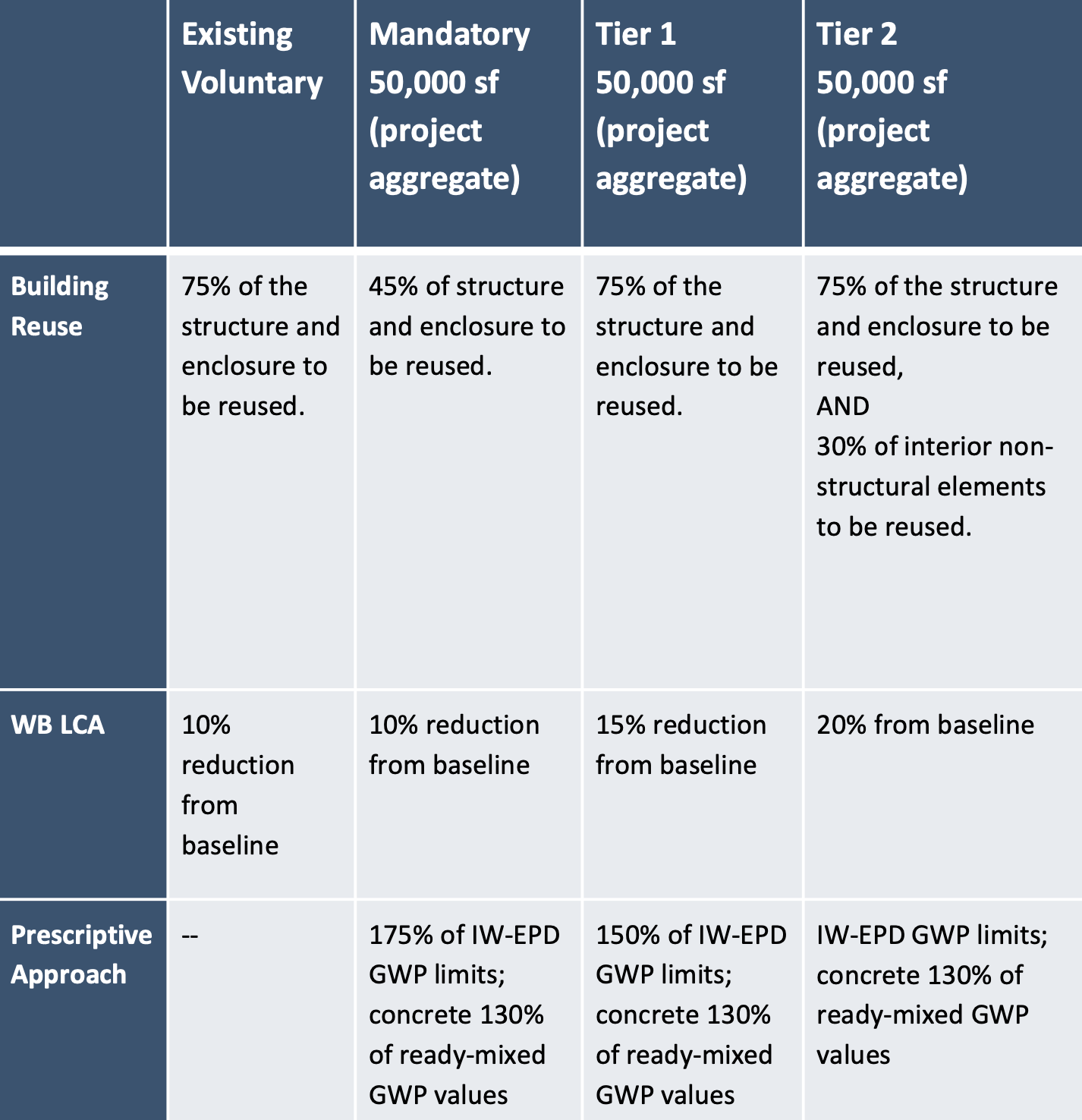
Whole Building Embodied Carbon Policy
California’s adoption of the Whole Building Embodied Carbon Policy in CALGreen marks a significant step towards environmentally sustainable construction practices in the state. This policy is the first of its kind in the U.S., aiming at reducing the embodied carbon emissions associated with building materials and construction processes.
It sets new requirements aiming to reduce the embodied carbon emissions associated with construction projects. Here are the key aspects of this policy concerning whole building EPDs (Environmental Product Declarations) and carbon emissions:
Breakdown of the policy
Effective Date: The policy, part of the 2022 Intervening Cycle updates to the California Green Building Standards Code (CALGreen), will be effective from July 1, 2024.
Applicability
- Initially, the measures will apply to non-residential commercial building projects over 100,000 square feet and school building projects over 50,000 square feet.
- From January 1, 2026, the square footage threshold will drop to 50,000 square feet for commercial buildings.
- These measures will not be applicable to hospitals and residential occupancies initially. Under the authority of the Office of Statewide Health Planning and Development (OSHPD) and the Department of Housing and Community Development (HCD) respectively.
Compliance Pathways
- Building Reuse: Reuse at least 45% of an existing structure and exterior, with some conditions on the total addition area when reuse is combined with new construction.
- Performance: Conduct a whole building lifecycle assessment (WBLCA) demonstrating a 10% lower embodied carbon emission than a baseline project design.
- Prescriptive: Document environmental product declarations (EPDs) for certain materials; steel, glass, mineral wool, concrete. That have a global warming potential lower than a specified threshold.
Materials
- While no materials are banned outright. The Prescriptive pathway limits material choices to those with global warming potential less than 175% of industry averages.
- Concrete, which was absent from the Buy Clean California Act framework at the time these requirements were developed, was given a weighted average approach to allow the balancing of high and low GWP concrete.
Specialized Consultants
- Specialized consultants are not mandated by these measures. The compliance documentation can vary based on the compliance pathway chosen.
- For the Prescriptive pathway, there are many product EPDs readily available, and for the Performance compliance via WBLCA. The required tools and resources are widely available, including no-cost software.
Anticipated Impact
- The new measures are expected to reduce carbon emissions. With an estimated reduction of at least 10% in carbon emissions. Moving embodied carbon considerations into mainstream building design and construction practices.
- By implementing these flexible standards, California aims to minimize potential business disruption or significant costs. While paving the way for future progress in reducing carbon emissions in the built environment.
Historical Context
- The policy came after the California Building Standards Commission voted unanimously on August 2, 2023, to pass two CALGreen amendments aimed at reducing embodied carbon, making California the first state to address embodied carbon in a mandatory code.
Code Location
- The measures will be located in Part 11, Title 24 of the CALGreen code.
The Whole Building Embodied Carbon Policy in CALGreen is a historic step towards meeting California’s climate goals by addressing the embodied carbon emissions in the construction sector. The new measures will apply to public and private non-residential buildings larger than 100,000 square feet, and schools larger than 50,000 square feet in size. The policy, part of the 2022 Intervening Cycle updates to the California Green Building Standards Code (CALGreen), will be effective from July 1, 2024.
